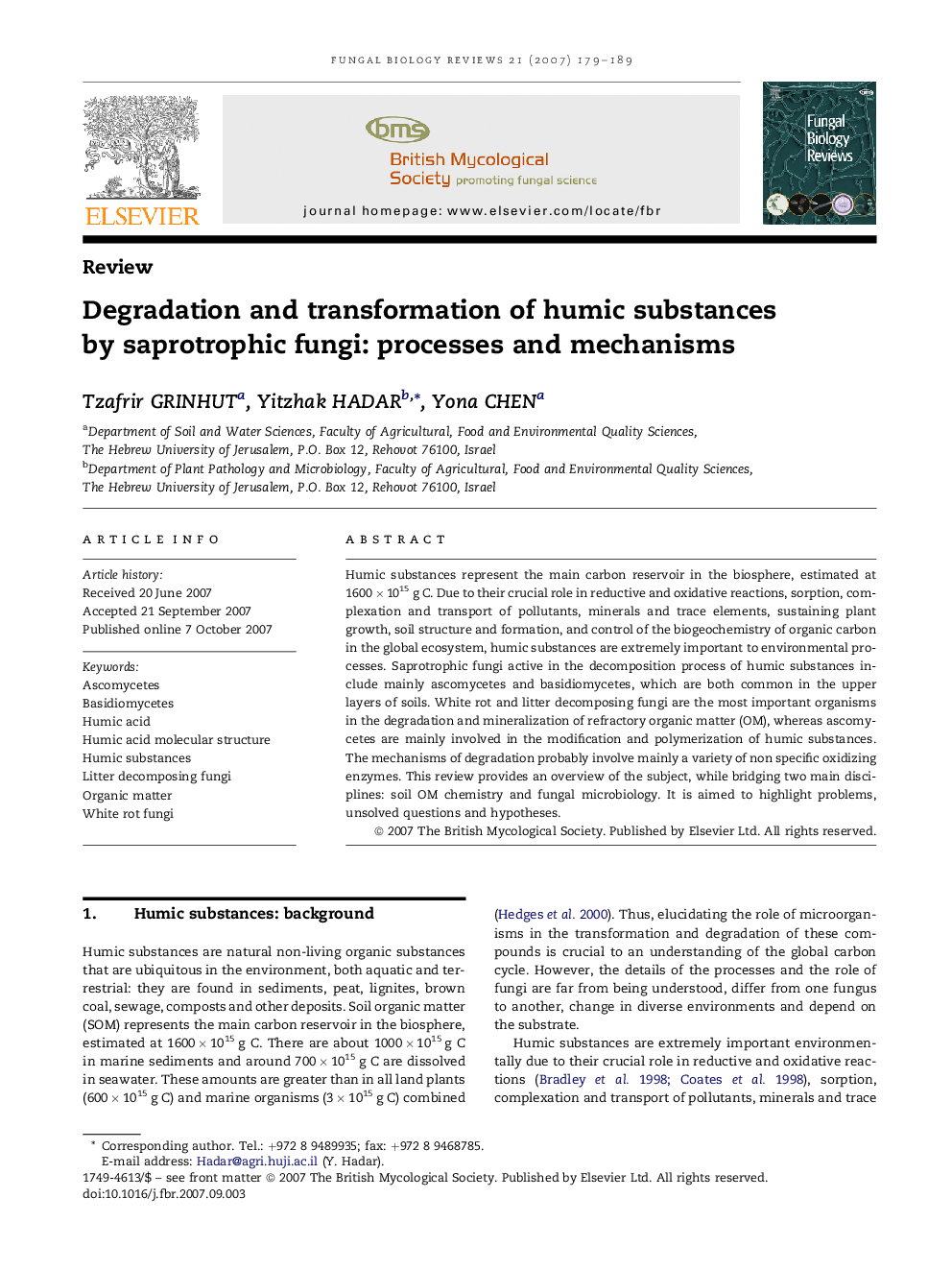| Article ID | Journal | Published Year | Pages | File Type |
|---|---|---|---|---|
| 2180643 | Fungal Biology Reviews | 2007 | 11 Pages |
Humic substances represent the main carbon reservoir in the biosphere, estimated at 1600 × 1015 g C. Due to their crucial role in reductive and oxidative reactions, sorption, complexation and transport of pollutants, minerals and trace elements, sustaining plant growth, soil structure and formation, and control of the biogeochemistry of organic carbon in the global ecosystem, humic substances are extremely important to environmental processes. Saprotrophic fungi active in the decomposition process of humic substances include mainly ascomycetes and basidiomycetes, which are both common in the upper layers of soils. White rot and litter decomposing fungi are the most important organisms in the degradation and mineralization of refractory organic matter (OM), whereas ascomycetes are mainly involved in the modification and polymerization of humic substances. The mechanisms of degradation probably involve mainly a variety of non specific oxidizing enzymes. This review provides an overview of the subject, while bridging two main disciplines: soil OM chemistry and fungal microbiology. It is aimed to highlight problems, unsolved questions and hypotheses.
